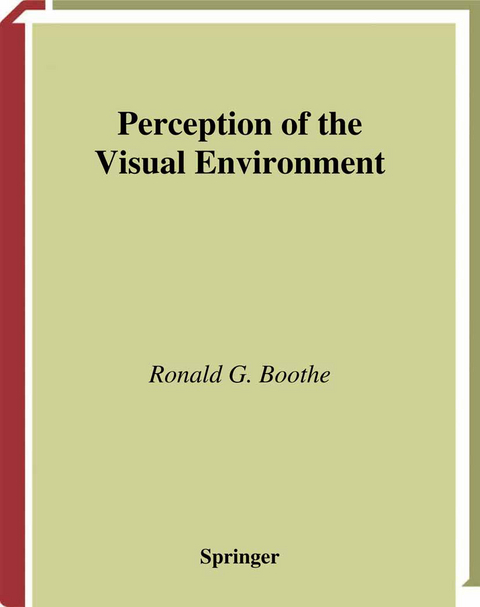
Perception of the Visual Environment
Springer-Verlag New York Inc.
978-0-387-98790-3 (ISBN)
Conceptual and Philosophical Issues: What Does It Mean to Assert That an Observer Perceives?.- Psychophysical Methods: What Scientific Procedures Can Be Used to Ask an Observer What Is Being Perceived?.- The Perceptual Environment: What Is Out There to Be Perceived?.- Sensing the Environment: What Mechanisms Are Used to Sample, Image, and Transduce Physical Stimulation from the Environment?.- Perceptual Processing I.Biological Hardware:What Properties of Neural Tissues Support Perceptual Processing in Humans and Monkeys?.- Perceptual Processing II. Abstractions: How Can Perceptual Processing Be Characterized and Modeled as Flow of Abstract Information?.- Color Vision: How Are Objective Wavelengths of Light Transformed into Secondary Qualities of Percepts Called Colors?.- Form Vision: How Is Information About Shapes of Objects Transferred from the Environment to Our Percepts?.- Perception of Three-Dimensional Space: How Do We Use Information Derived from One or Both Eyes to Perceive the Spatial Layout of Our Surroundings?.- Dynamic How-Perception: How Do We Perceive and React to Change and Motion?.- Perceptual Development: Where Does the Information Come from That Allows Perceptual Systems to Become Wired Together in Such a Manner That They Can Perceive?.- Higher-Order and Subjective Aspects of Perception: How Are Low-Level Stimulus Properties Transformed into High-Level Percept Qualities?.
| Zusatzinfo | X, 408 p. |
|---|---|
| Verlagsort | New York, NY |
| Sprache | englisch |
| Maße | 178 x 254 mm |
| Themenwelt | Geisteswissenschaften ► Psychologie ► Allgemeine Psychologie |
| Geisteswissenschaften ► Psychologie ► Biopsychologie / Neurowissenschaften | |
| Geisteswissenschaften ► Psychologie ► Verhaltenstherapie | |
| Medizin / Pharmazie ► Medizinische Fachgebiete ► Augenheilkunde | |
| Medizin / Pharmazie ► Medizinische Fachgebiete ► Neurologie | |
| ISBN-10 | 0-387-98790-8 / 0387987908 |
| ISBN-13 | 978-0-387-98790-3 / 9780387987903 |
| Zustand | Neuware |
| Haben Sie eine Frage zum Produkt? |
aus dem Bereich


